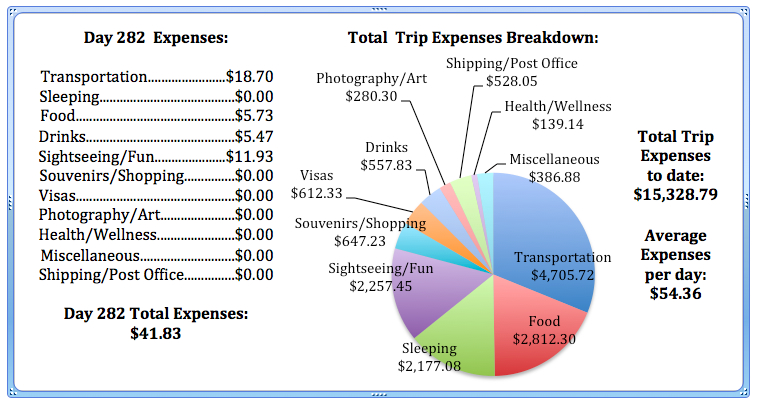Knossos, also known as the oldest city in Europe was the center of Minoan civilization during the Bronze Age. In other words, it’s super old and it’s the thing to see when you visit Crete. I’m not super familiar with the Minoan civilization other than it being responsible for the two early writing systems, Linear A and Linear B. Arthur Evans was the archeologist responsible for the discovery, the excavation, and the partial restoration of the palace. I don’t know what I was expecting, but I wasn’t really expecting what we saw. I shouldn’t have been surprised there was so little… but in a way, I was. It was a bit like going to see The Temple of Artemus in Turkey. We saw, we took a picture, we left. That’s probably not fair to Knossos as there is a lot more to see than just one remaining column (as there is at The Temple of Artemus). We walked around for about an hour, perhaps more than that. I found the restored artwork the most impressive part of the entire palace.
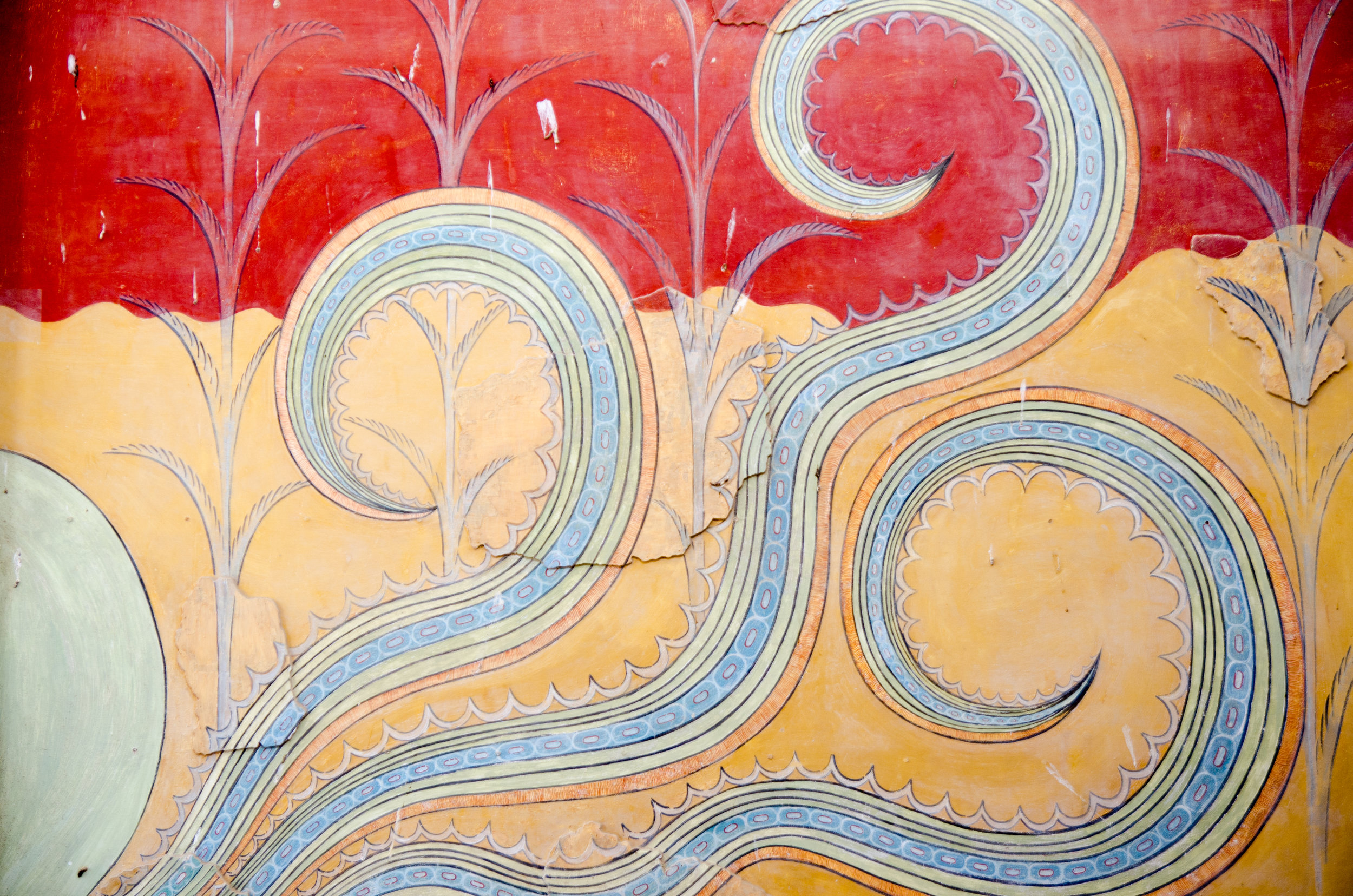
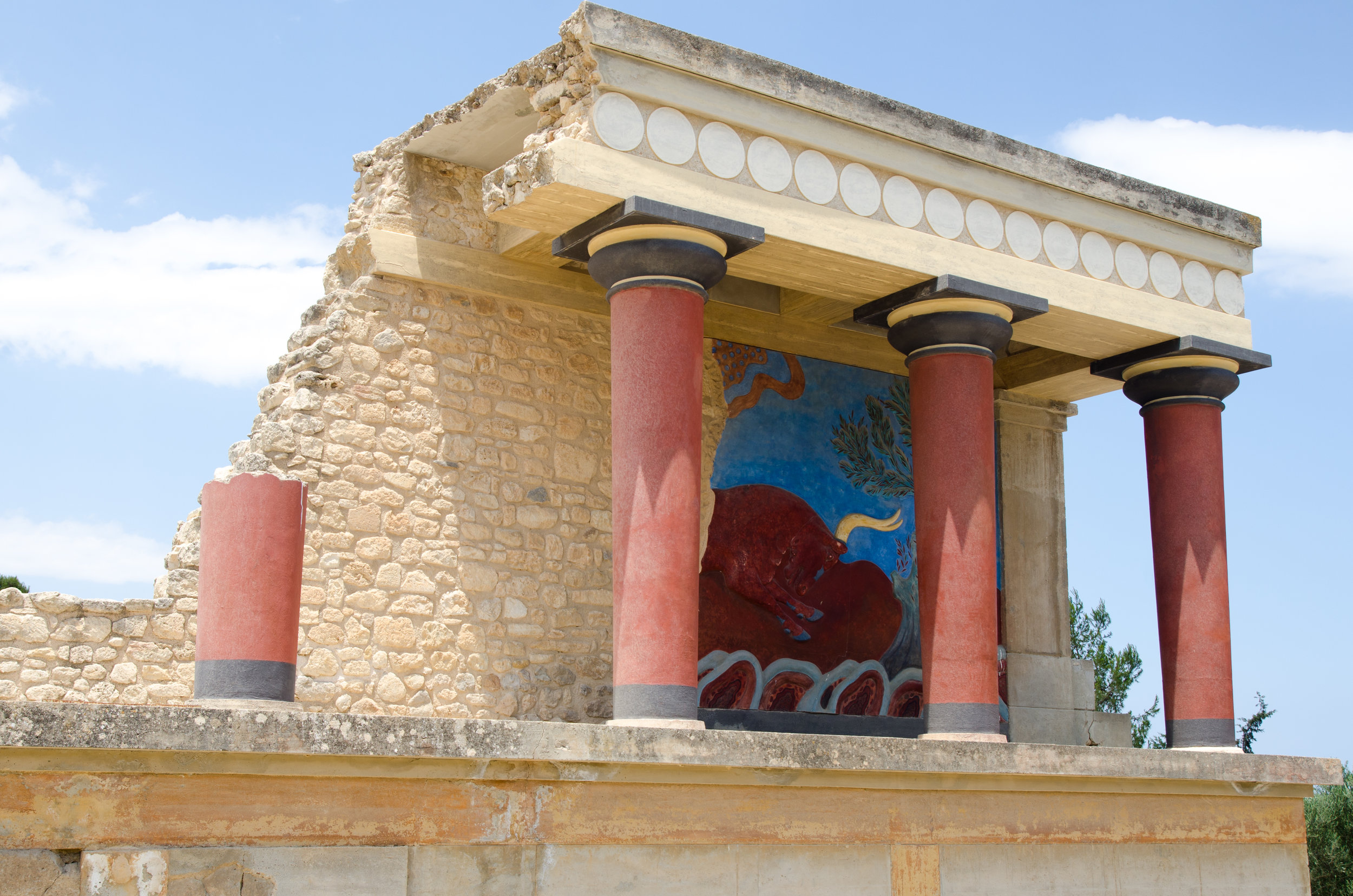
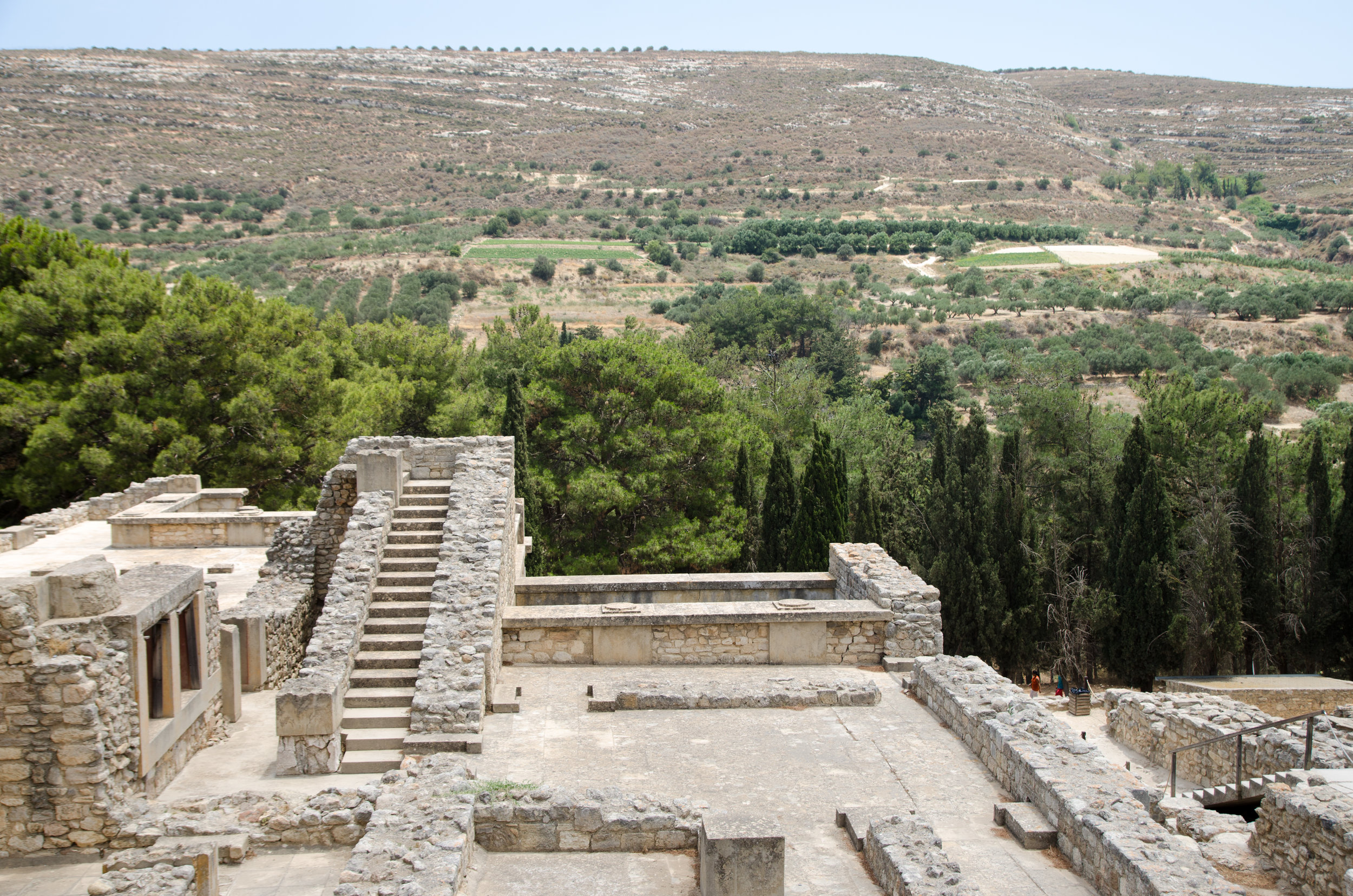
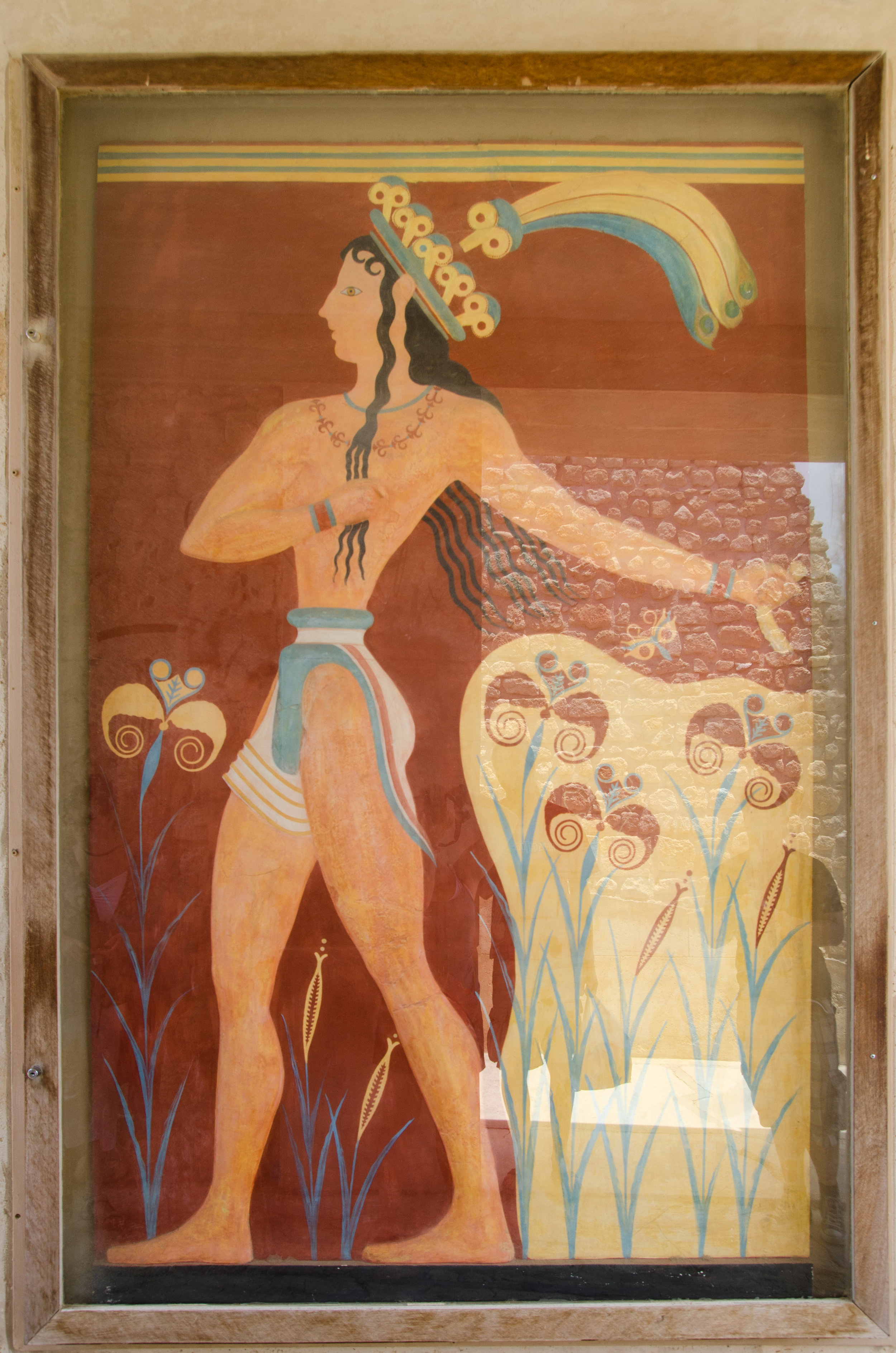
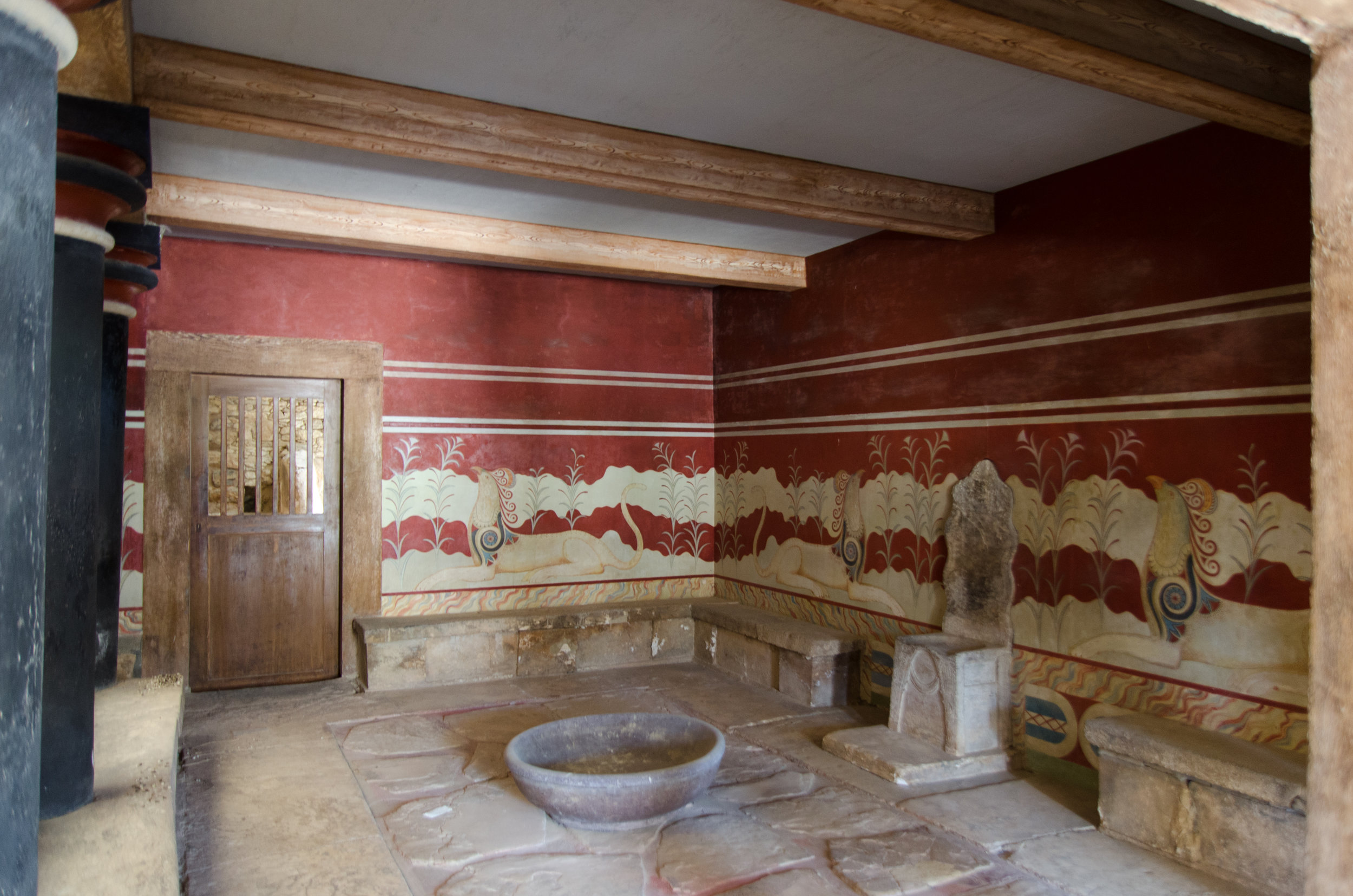
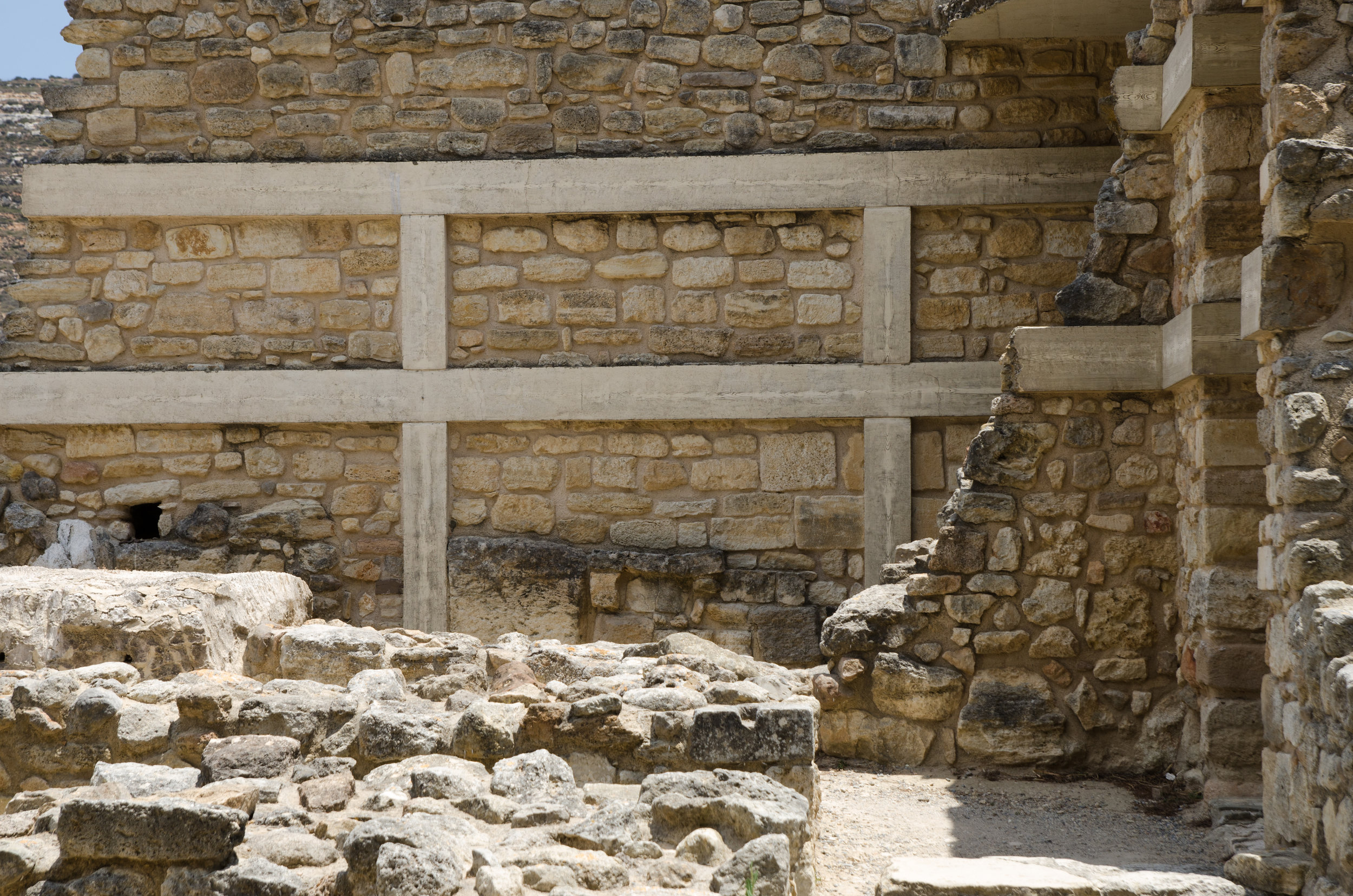
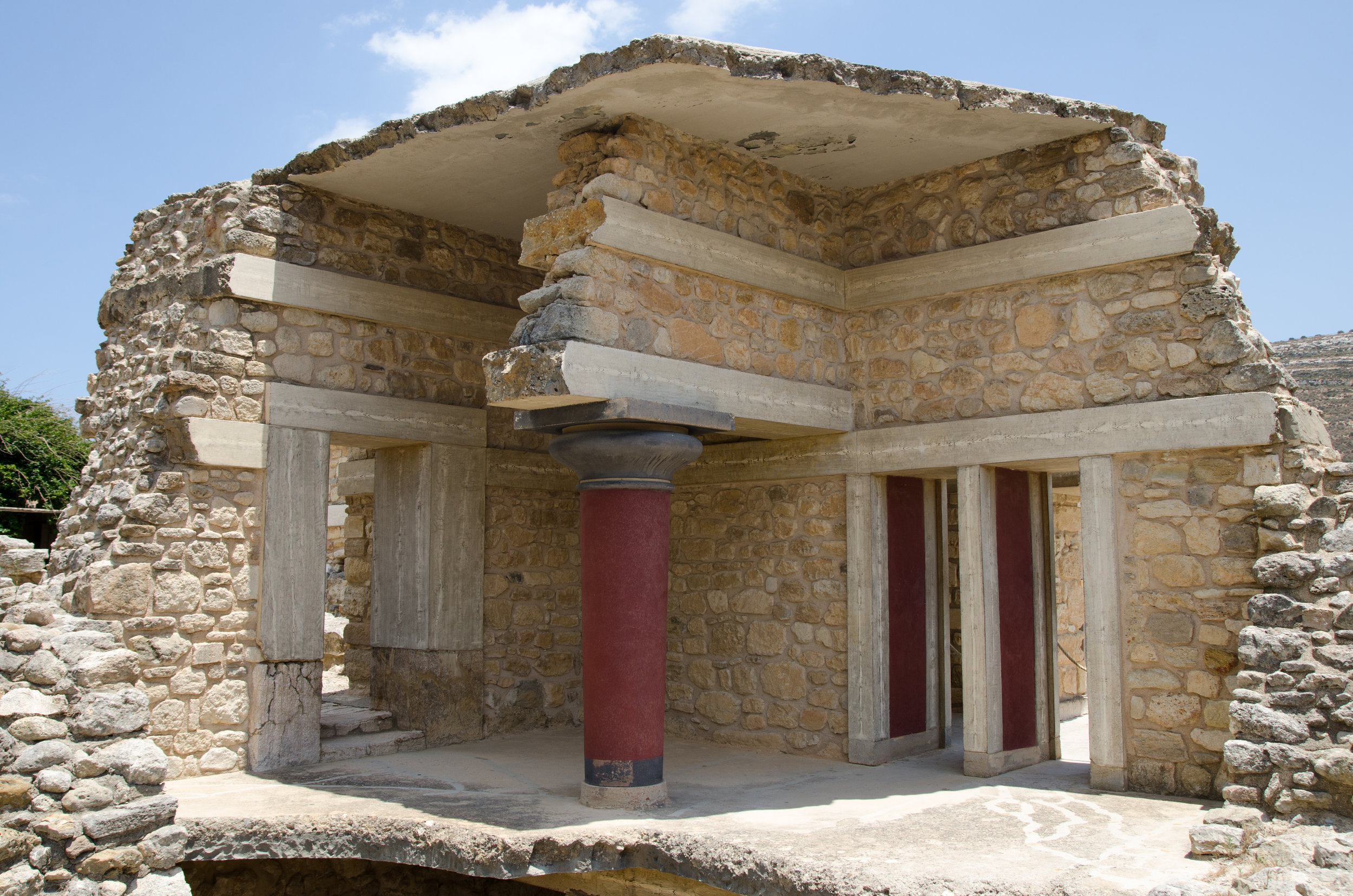
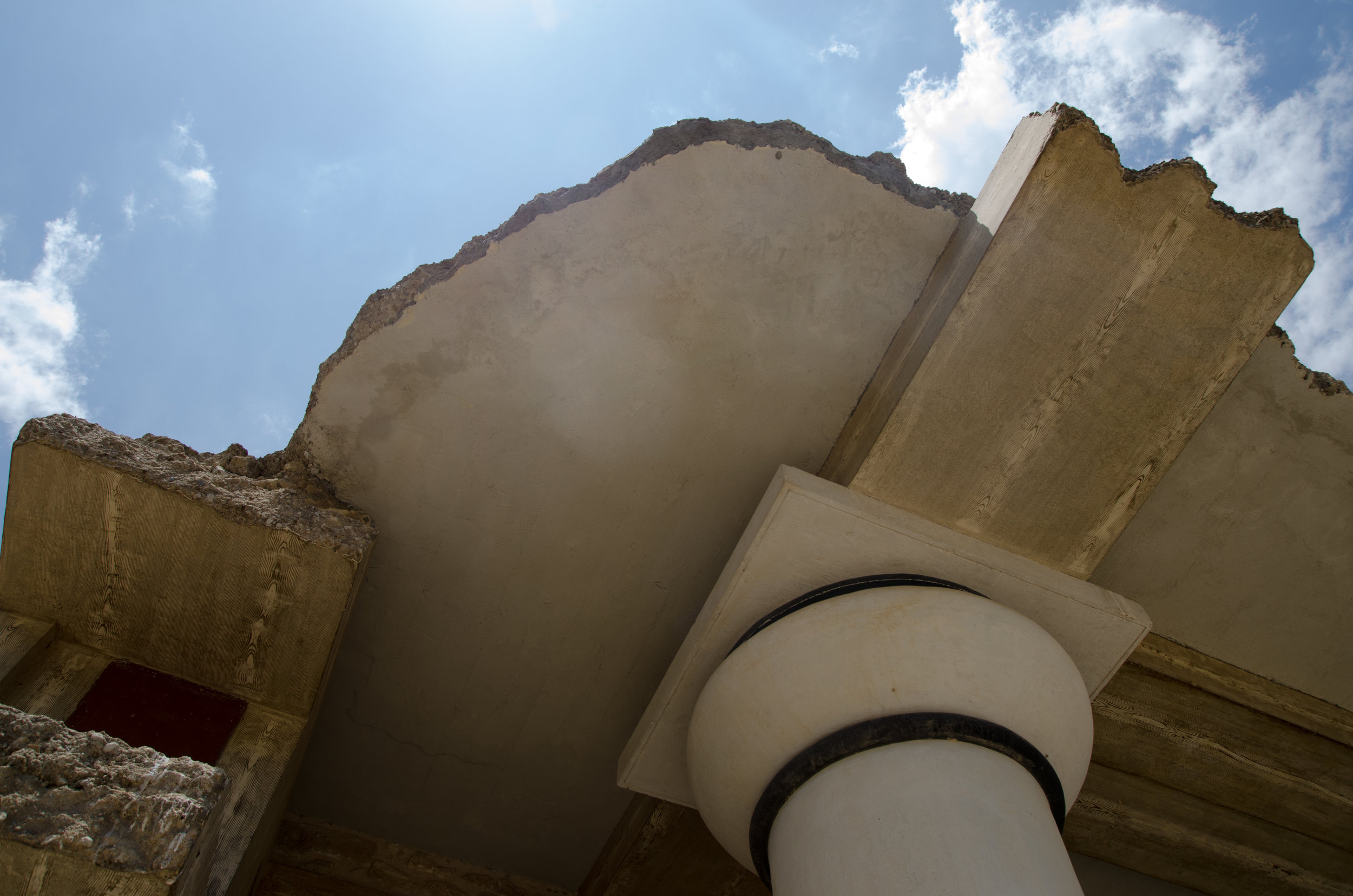
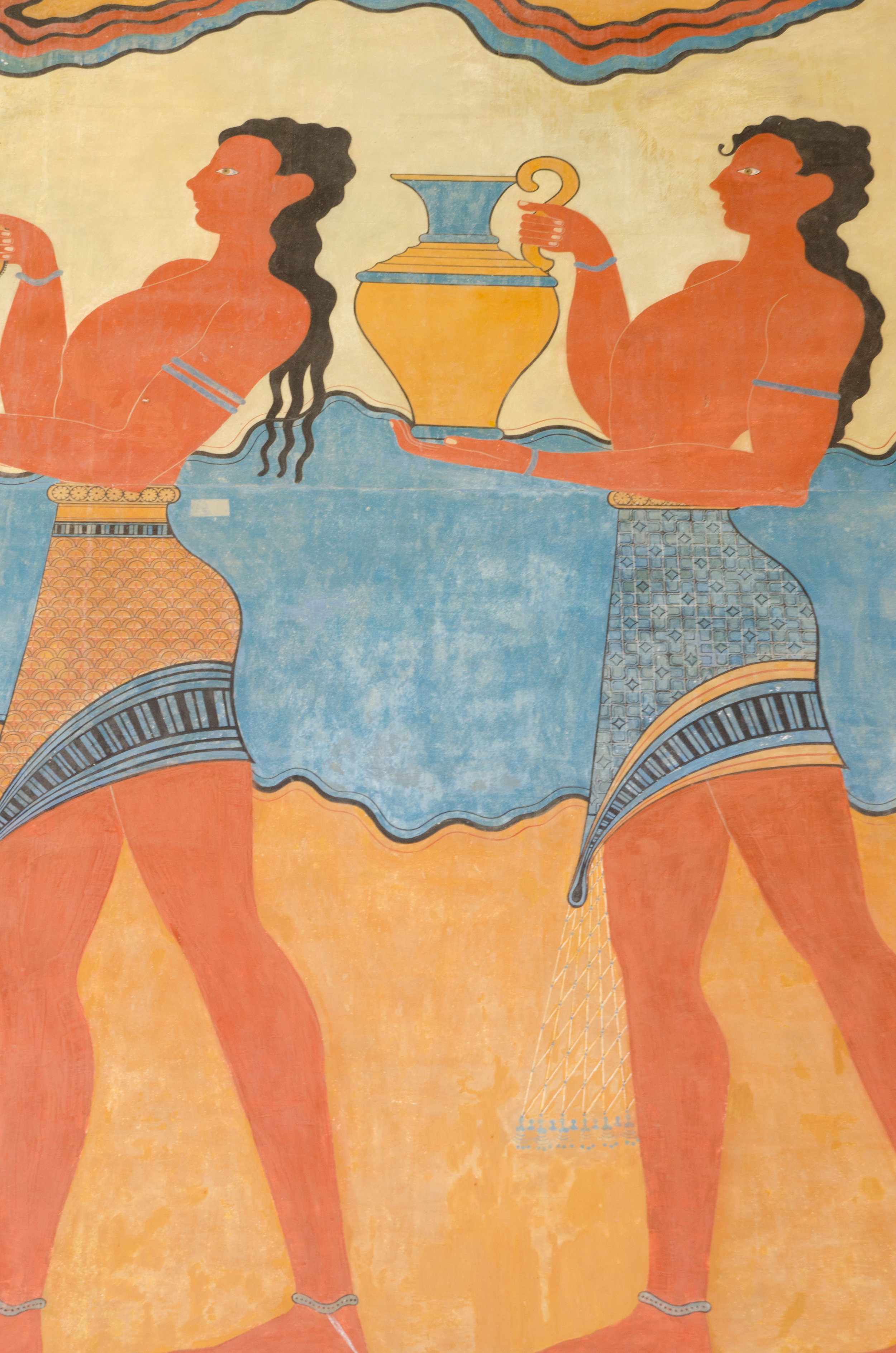
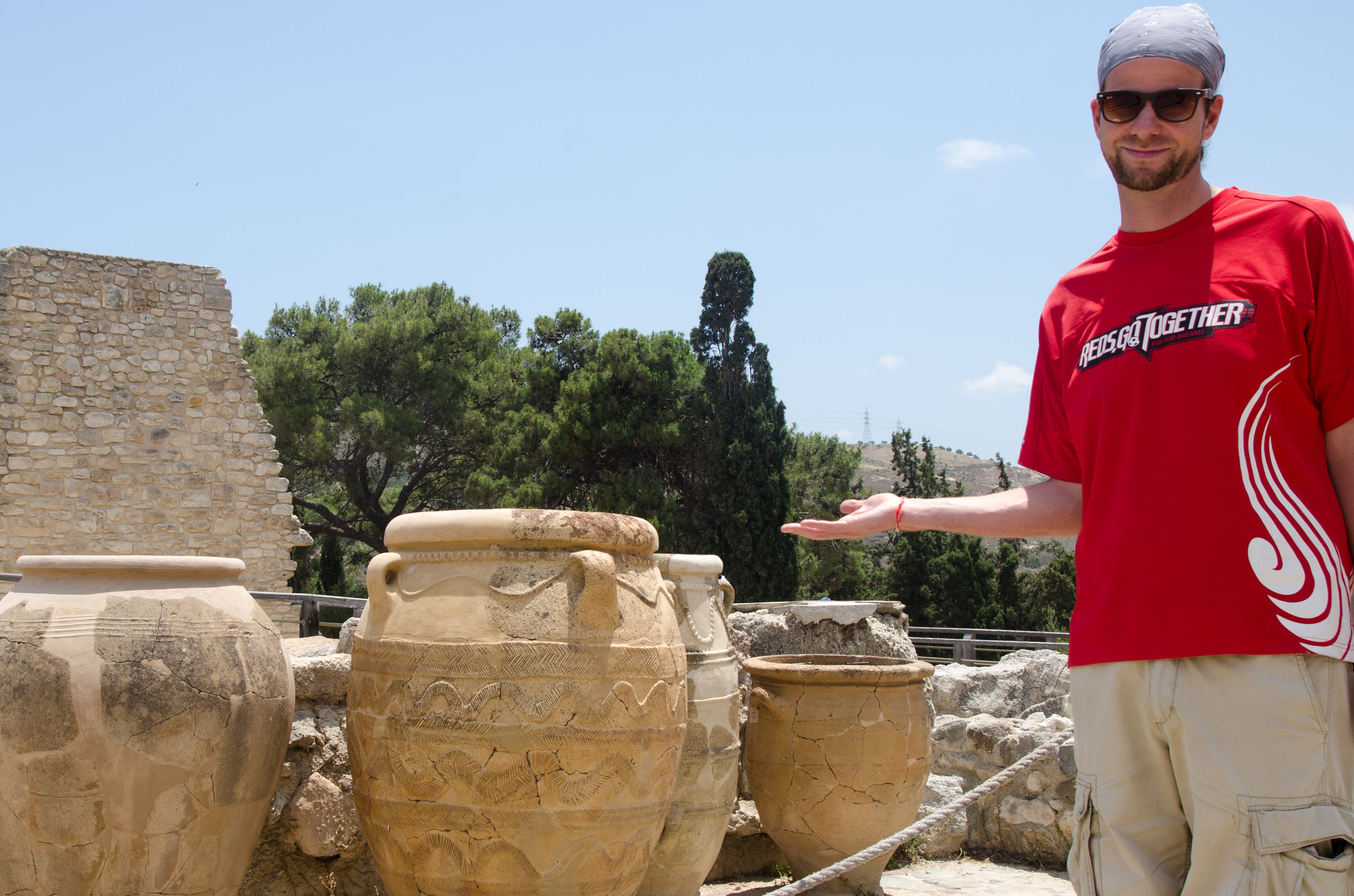
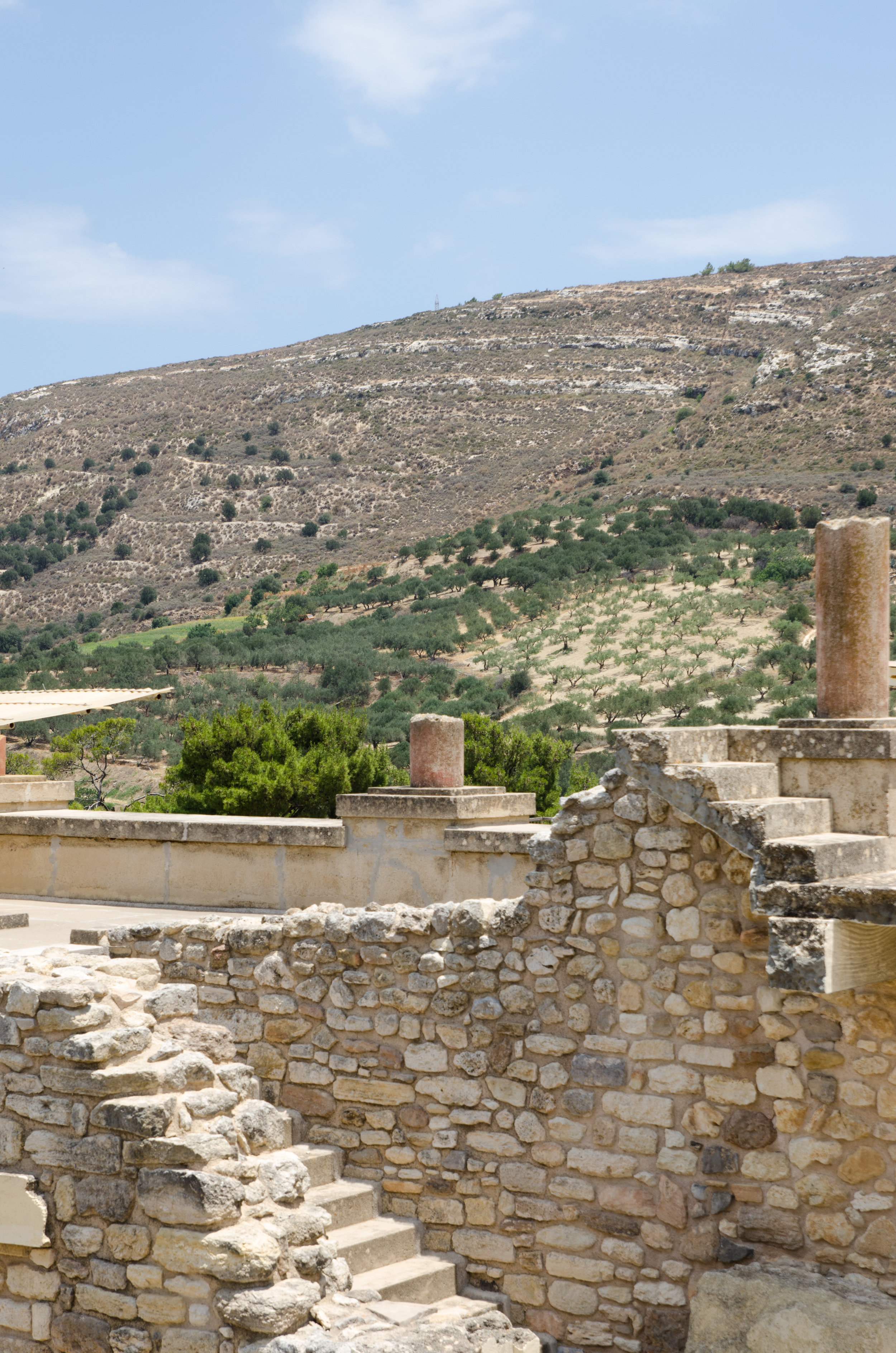
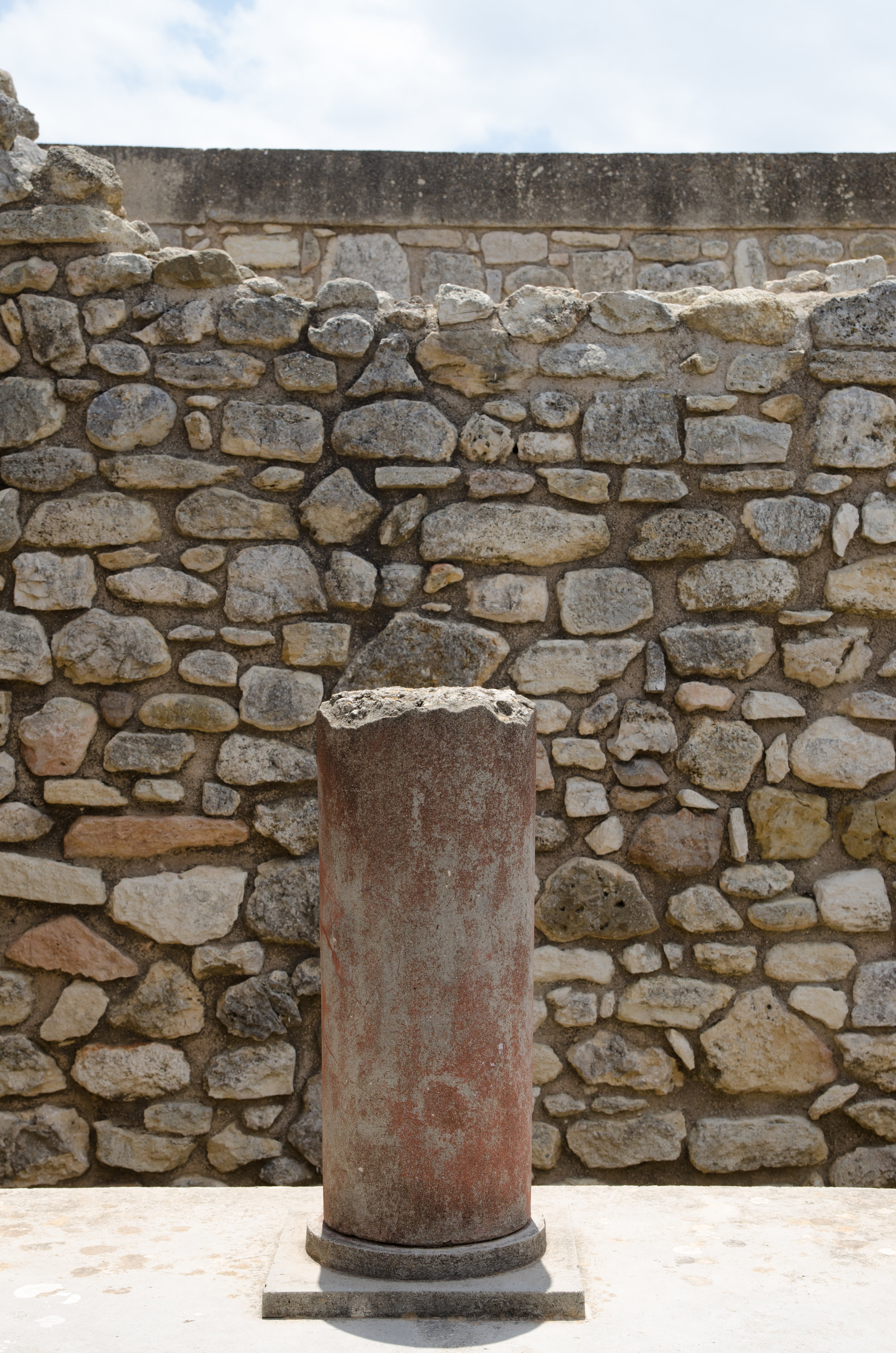
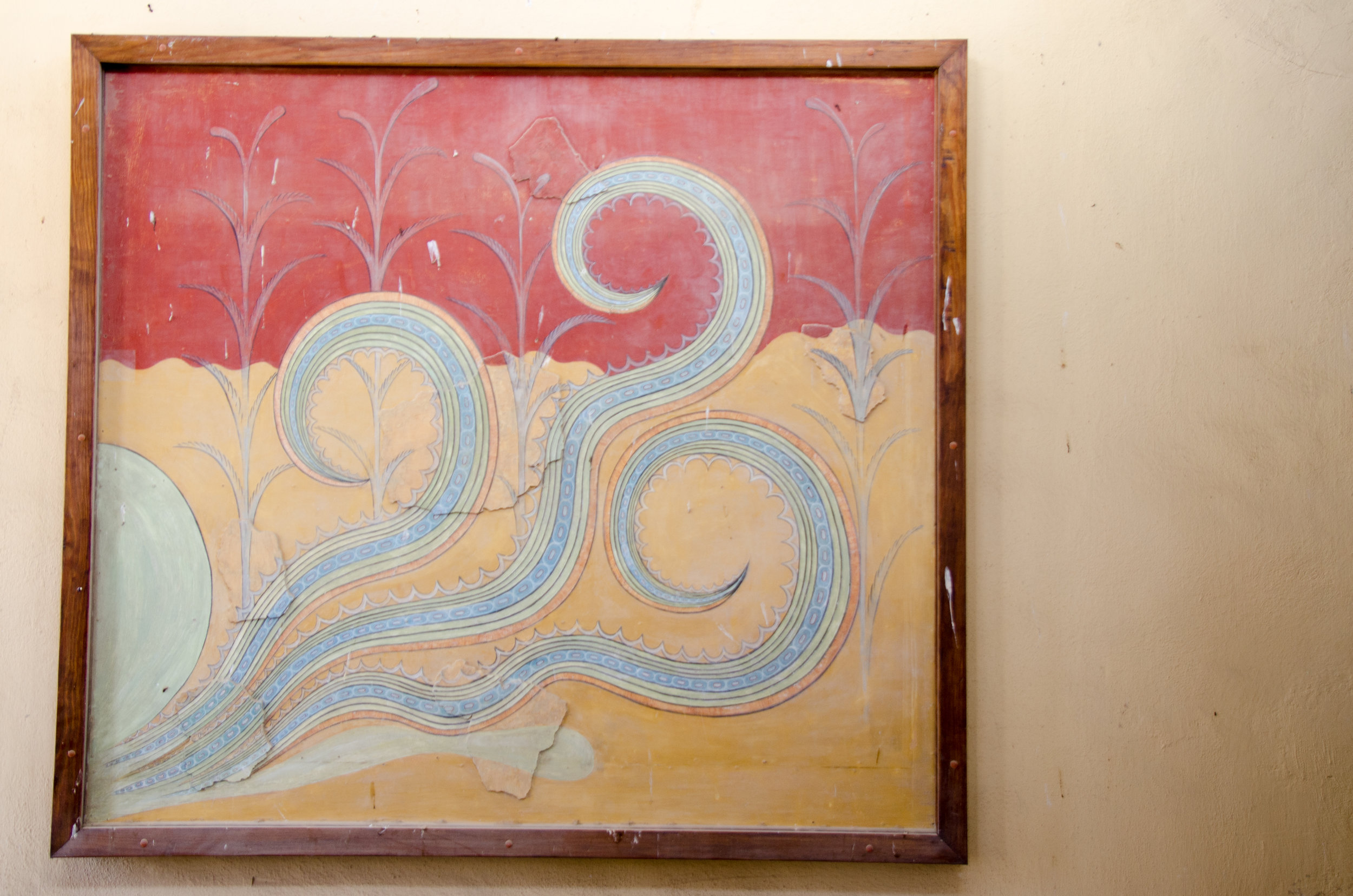
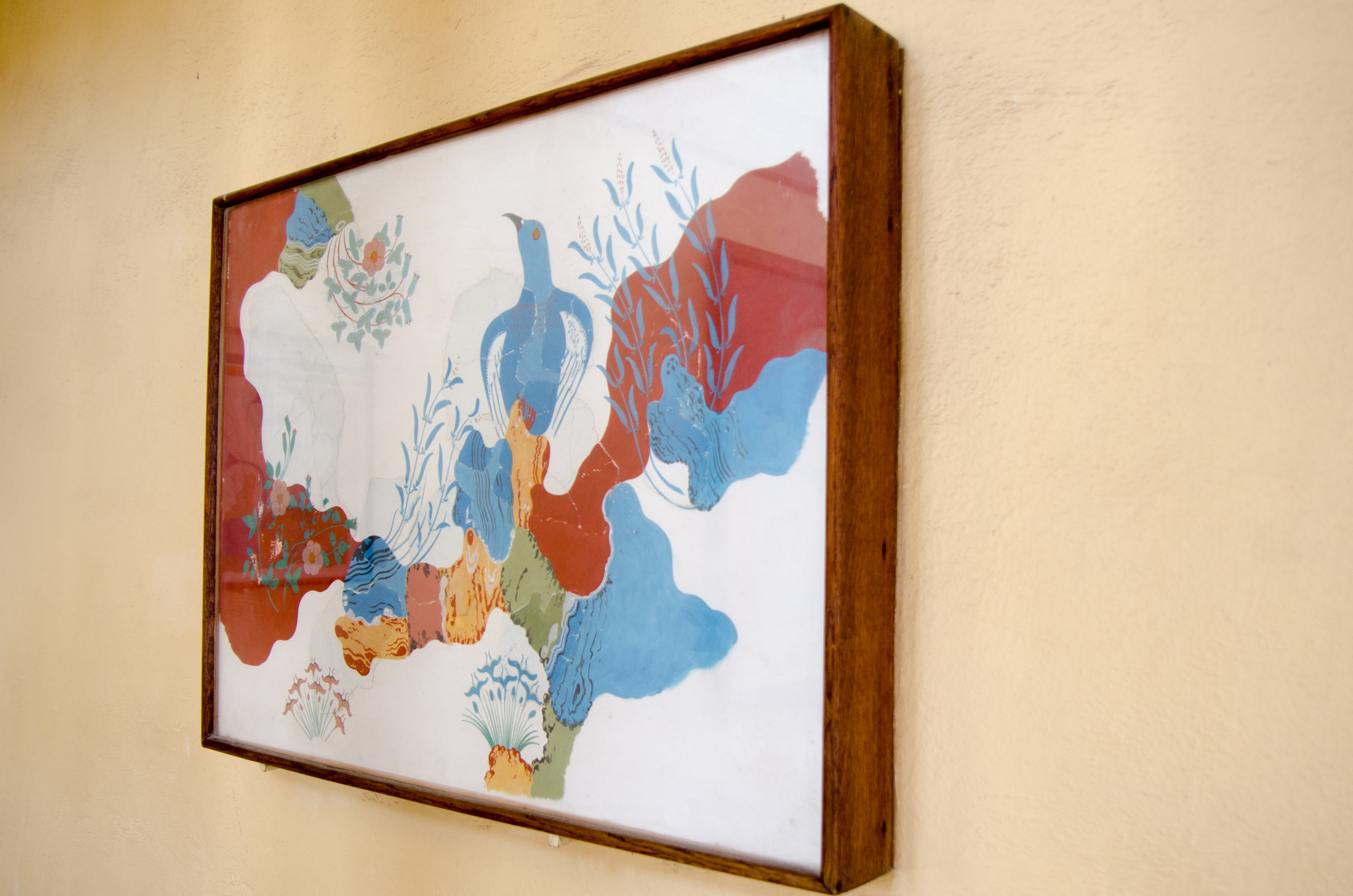
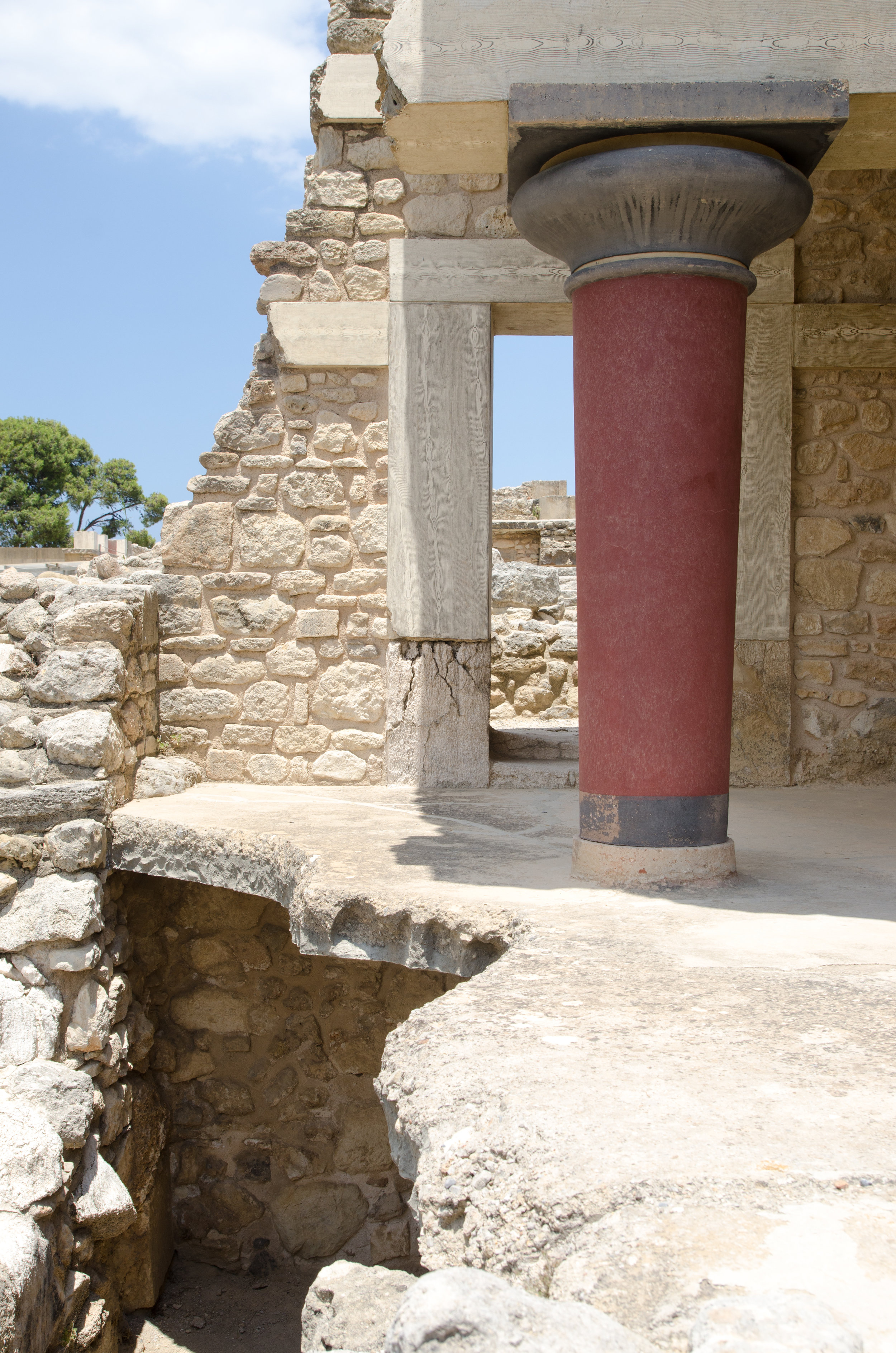
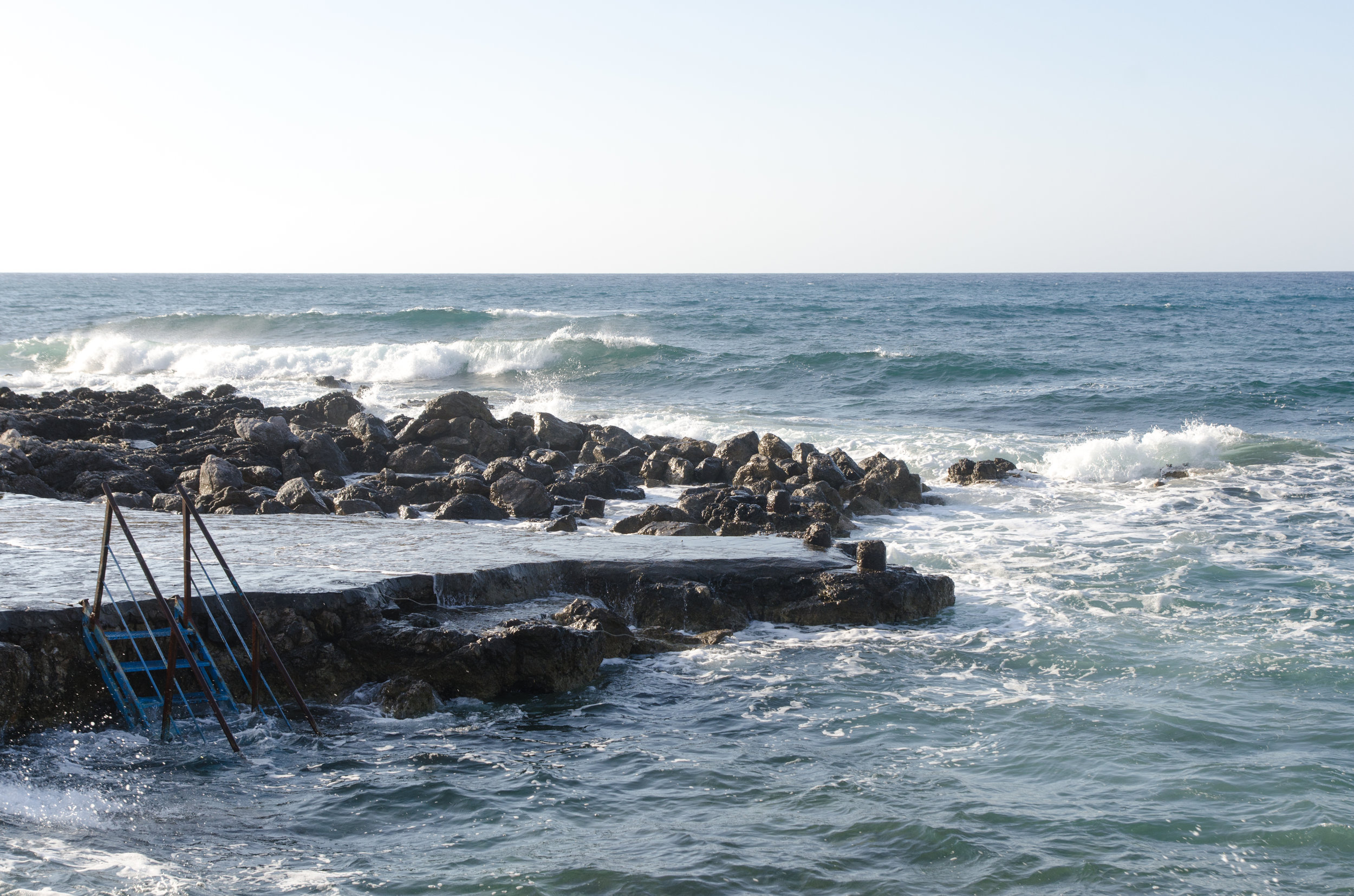
Another impressive detail of the palace were the many levels. If I caught myself looking at the stairs at a certain angle, I liked to imagine it used to be an Escherian stairwell back in the day of the Bronze Age.
According to Greek mythology (I had to look this story up), Minos was the King who lived at Knossos. He had a labyrinth constructed for his son, the Minotaur. Maybe you’re wondering how Minos came to have a minotaur for a son. Let’s back up. Minos received a bull from Poseidon that he was supposed to sacrifice to honor the god in order to keep his power as king, not giving it up to his brothers. Unfortunately, Minos kept the white bull, and instead sacrificed another less pretty bull of his own. As punishment, Aphrodite made Minos wife fall in love with the bull that Minos didn’t sacrifice. His wife figured out how she could mate with the bull, and subsequently gave birth to a minotaur. Crazy, right? The minotaur grew ferocious and ate men instead of other traditional food. Obviously this was a threat, so Minos had gigantic labyrinth constructed to hold the Minotaur (in or near Knossos). It’s said that Theseus (a prince from Athens) killed the minotaur with the double axe out of love, I think for Minos’ daughter.
There were a few double axes visible at Knossos, coincidentally the double axe is labrys in Greek. Which is, if you haven’t figured it out, it’s part of the world ‘labyrinth.’ I think that sums some of the mythology behind Knossos up. If it doesn’t, please ask Google. It’s interesting to compare the mythology to the actual ruins that are there today. There were so many stories within this palace and it was a bit maze-like. You would go up stairs and around a corner and be at a different level unable to get to the level just below you. This image below was the King’s room. There was a line to walk past and take a quick picture. Not a lot of explanation was given on the site, unless you had a guide with you. We were approached by one guide, asking us if we spoke German.
I’m not exactly sure how much is the reconstructed bits from Arthur Evans and how much was standing upon excavation. Either way, I appreciated what was there for visitors to see.
Since Turkey, and the archeological museum there, Andrew has enjoyed pointing out any and all ‘jugs’ on display. “So many jugs!” he’d exclaim. “Look at those jugs.” he’d wink. “Now those are some big jugs!” he’d nudge me- in the middle of the Istanbul, in Athens, and now in the middle of Knossos.
I gave up trying to be the mature, responsible one and asked if he wanted to take a pictures with those jugs. He rolled his eyes, like I was sooo immature, and then posed with a big smile.
The stairway to the sky was my favorite. Where did it once go? Anywhere? Nowhere?
The very first picture of this post is a close-up of the picture below. It’s restored, but you can see the original pieces of it are raised up from the background. I thought it was simply incredible. How did they know this was what it looked like? What if this is not it at all and they have fooled everyone? Regardless I fell in love with the design aesthetic. I tried to take a few more images of other pieces, but the glare on the glass on some was too much and it took away from the paintings themselves.
And then we were finished. We made our way out of Knossos and headed back to Heraklion to catch another bus to Milatos, where we would meet Andrew’s sister’s friend and husband who have retired there. Both well traveled, they knew how to make us feel at home and immediately took us down to one of their favorite cafes right alongside the sea. When the water got a little rough, the waitress, and their friend informed us that “the shower was for free.”

